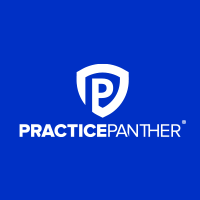The year may be winding down but it’s the perfect time to start thinking about your law firm’s goals for 2022. Year over year, the need for a cohesive marketing strategy has become imperative to a law firm’s business operations and lead generation strategy. Many firms, however, aren’t sure where to start or simply don’t have time to properly execute a winning strategy.
Whether your firm doesn’t have a marketing strategy at all, your current strategy needs a revamp, or you’re looking for basic best practices, we’ve partnered with legal marketing consultant, Stacey E. Burke, to help your firm build the bones of a successful marketing plan. Together, we’ve laid out actionable steps and tools to measure success from origination to implementation.
Determine Your Baseline (4:45)
A great marketing strategy needs a solid foundation, and that means getting a full picture of your law firm’s current state. You’ll need to gather data from the past year such as any vendors you’ve used, what they promised to deliver and the results, how much money you allocated, and social media metrics, just to name a few. Once you’ve gathered this data, you should have a better understanding of what worked over the last year.
Make Clear, Concrete Goals (5:39)
Every firm’s goals for marketing are different, but one thing remains the same — having clear goals that are tied to data and a time frame. It’s very easy to generalize goals and say for instance, “I want to generate more leads.” This is a common goal for many firms but it’s missing metrics that will later help you determine the success of this goal.
Define Your Target Audience (7:15)
There are different areas of law for a reason, so it makes sense that the audience they market to follows suit. For example, a business litigation firm and a pharmaceutical mass tort firm aren’t targeting the same audience. Each audience has very different specific needs that will attract them to their respective legal services. Defining your firm’s target audience is one of the most important steps in developing your marketing strategy. If you’re not reaching the right people, the right way, then your efforts will almost always fall short.
Get Your Tactics in Your Order (9:10)
As previously mentioned, you have to define your audience and understand where they are. For a business litigation firm, their audience is likely on LinkedIn. This type of firm will want to focus its efforts on building a strong presence on LinkedIn through tactics such as ads, circulating thought leadership pieces, and employee engagement. Facebook is another platform that other practice areas, such as mass tort, will find success in reaching their target audience.
Bring It All Together (12:49)
You have your baseline, goals, target audience, tactics and now it’s time to create a broad strategy to execute on! Using your goals as a guide, your plan should have an overarching annual (broad) strategy and then be broken down into each quarter of the year. Of course, things change each quarter and you’ll need to be flexible based on what was achieved in the prior quarter.
The end of the year is a great time to create a new strategy. You can reflect on the previous year and use the first quarter of the new year to test your tactics and build off of those results throughout the year.
Make Sure You Have the Tools to Handle New Leads (18:30)
An issue some firms find themselves in is a lack of resources to manage new leads. If your marketing strategy is performing, odds are you have a flow of leads or new business that you weren’t previously receiving and you need to be able to accommodate that.
The best way to convert incoming leads is to have seamless, self-service tools. There is no paper and client hand writing to decipher — clients simply input the data through a custom form your firm creates. Not only will this help your firm handle new leads, but it will also show prospective clients that your firm is modern, tech-savvy, and values their privacy.
Bake in Your Follow-up (21:06)
The more “set it and forget” style processes you bake into your marketing strategy, the better. It’s one thing to capture new leads via automated intake, but the follow-up is just as important as actually closing on new business. You can create custom workflows that assign tasks to team members and send reminders. Having a standardized process will make onboarding new clients easier, limit confusion amongst your team, and keep leads from going cold.
Tracking Your Progress (33:01)
There are a myriad of ways to track your progress, but the important thing to remember is that you must track everything! If you don’t know where you started and ended, your firm will have a hard time determining what aspect of your marketing strategy is yielding the most return. Tools like Google Analytics or Google Search Console can be key in helping you determine where leads come from.
Access the Full Session
For specific examples, data, and an in-depth view of creating your firm’s next marketing plan, you can view the recording below.




 />i
/>i
